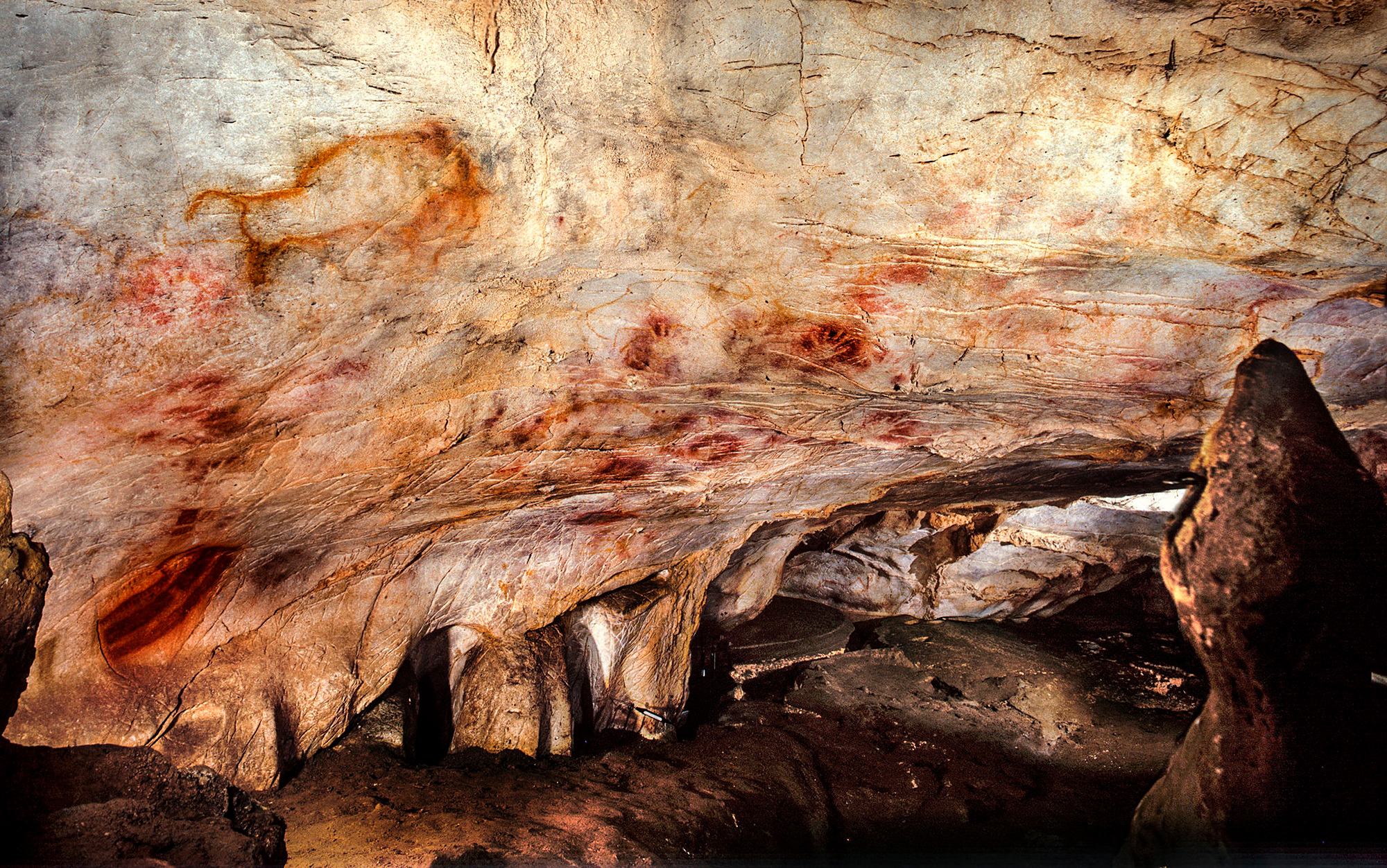For Palaeolithic societies, art-making was both a tool for survival and a tactile, joyous exploration of the world
The main room at the Cave of El Castillo in Cantabria, Spain, showing hand prints and depictions of animals
© Gabinete de Prensa del Gobierno de Cantabria
Cave art was a joyous, tactile exploration of the world. In this Aeon article, Izzy Wisher discusses the narratives behind some of the most famous cave art sites in the world, using the archaeological evidence to tell a story about the emotion and intimate moments that produced stunning depictions of animals at these sites. Opening with a narrative about a young hunter-gatherer as she explores a cave and adds to a long tradition of art making within this site, the article contrasts the intimate and tactile nature of art in the Upper Palaeolithic with the unusual way we often engage with art in the Western world – as a detached observer that perceives art as a commodity. The article continues to demonstrate the long tradition of art making within our human origins, from crude figurative forms that are hundreds-of-thousands of years old to the richly decorated caves in France and Spain. These decorated caves are presented as time capsules of human artistic behaviour, which reflect the weird and wonderful ways Palaeolithic people engaged with art and utilised it to better understand their own place within the world. Through exploring some of the oldest evidence of art in the world and what it might have meant to our most ancient ancestors, this article discusses how art is a fundamental part of who we are: we have an innate desire to create.
To read more, click here:
→ https://aeon.co/essays/ice-age-art-making-was-a-tactile-joyous-exploration-of-the-world

















